Discovering the natural beauty of an ancient Berber valley
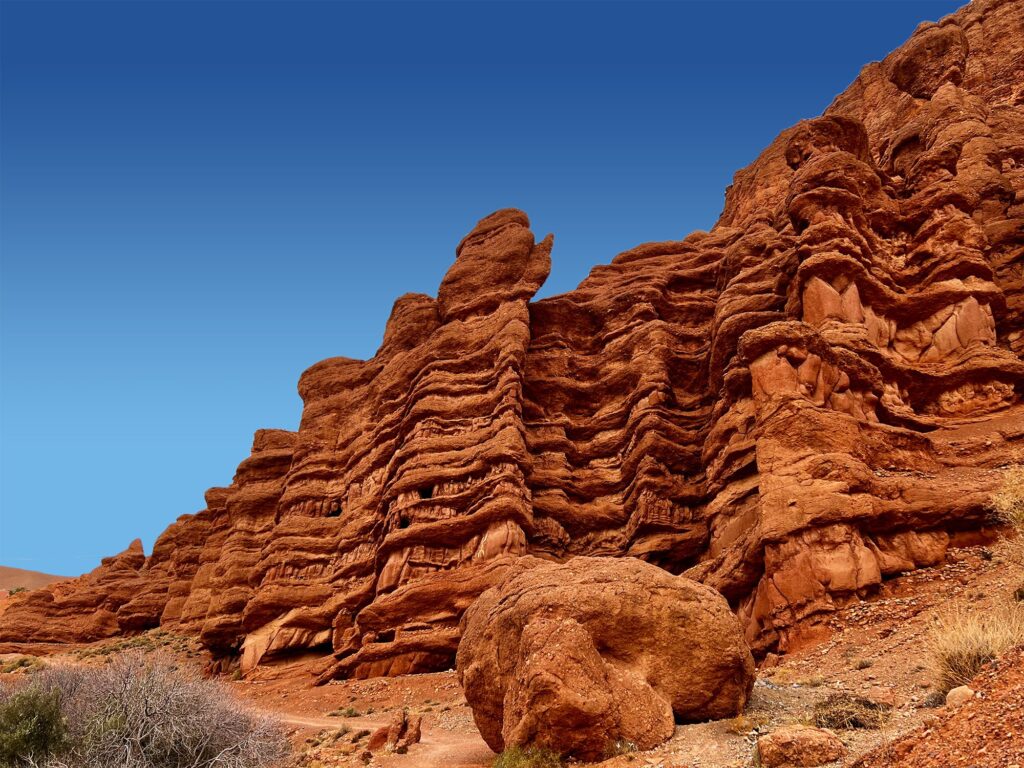
Here’s a refined version of your description for Dadès Valley with additional details:
The Dadès Valley lies approximately six hours west of Marrakech, often serving as a scenic detour on the way to the Merzouga luxury desert camps. Stretching from Boumalne Dades to the northern villages of the High Atlas Mountains, including M’semrir, the valley is a stunning blend of natural beauty and traditional Berber culture.
We recently stayed in a traditional mud-brick house in Ait Oudinar, beautifully renovated by skilled local craftsmen. The house was tastefully decorated with local Berber style, adorned with vibrant rugs and an abundance of lights, creating a warm, welcoming atmosphere. Located at 1,668 meters above sea level, the village enjoys cooler temperatures compared to the bustling cities below. During our visit in January, it was cold at night, with the edges of the nearby stream frozen over.
The valley floor below the house is lush, supported by a series of ancient irrigation channels that bring water to the fields. The fertile land is home to an abundance of birdlife, and the orchards of fig, almond, and olive trees are a testament to the hard work and ingenuity of the local Berber farmers. The serene atmosphere of the village, along with its rich natural surroundings, offers a peaceful and enriching experience that truly captures the essence of the Dadès Valley.
The valley is dotted with numerous ancient kasbahs and ksour (fortified villages), particularly in the Berber settlements of Aït Youl, Aït Arbi, Aït Oudinar, Aït Ouffi, and Aït Toukhsine.
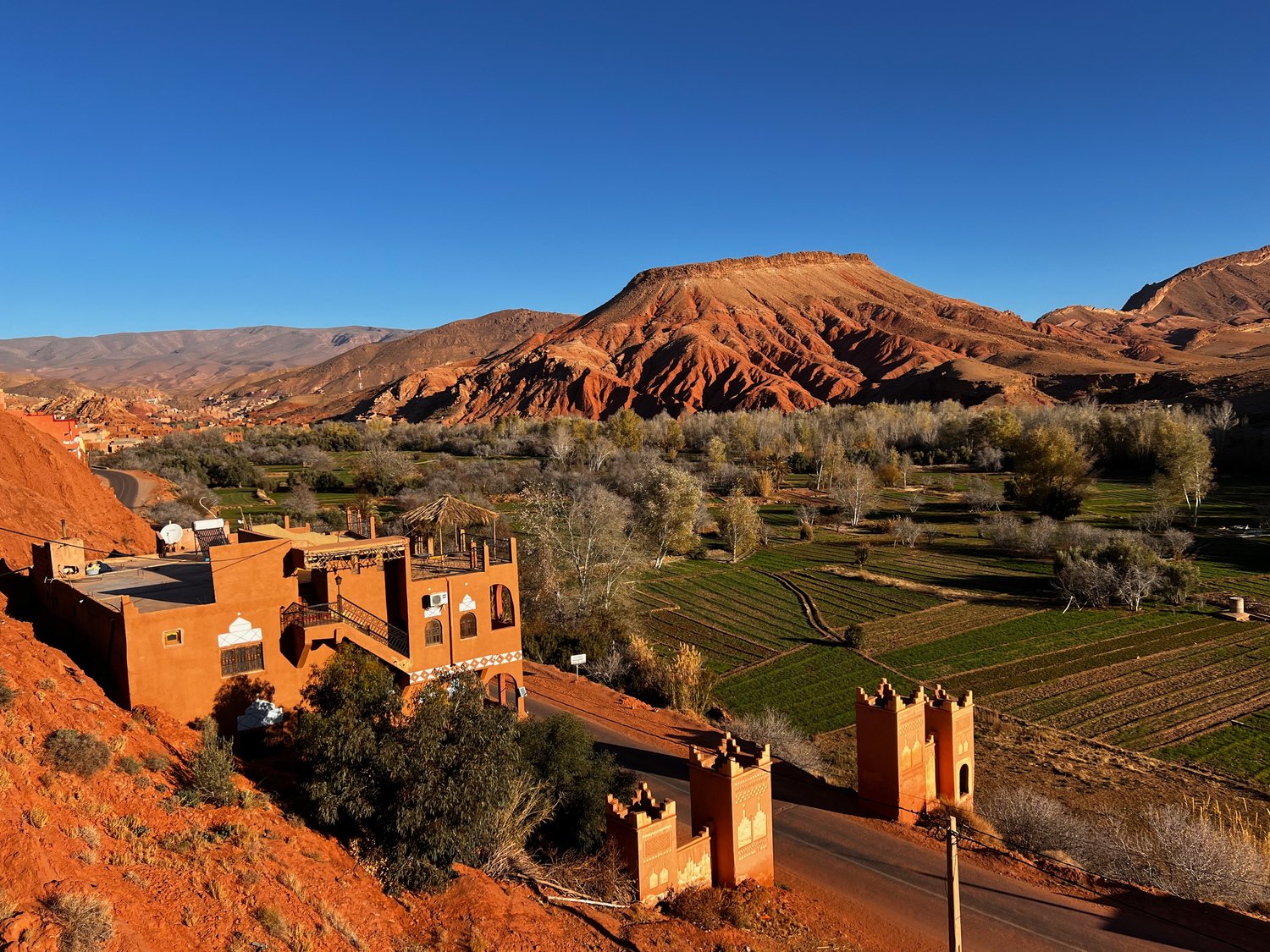
Walking in the Dadès Valley
The dominant color palette here is a striking contrast of red and green. The hills flanking the valley are painted in shades of dusty rust, sharply interrupted by bold rock formations in deep vermillion. Below, a narrow strip of fertile land stretches along the valley floor, where vibrant greens and yellows stand out, though they are punctuated by barren patches of pale earth, a sad reminder of the years of drought that have left the fields parched.
Stepping outside, we find ourselves immersed in the trees, strolling beside the irrigation channels. The colors, textures, and patterns of this cultivated landscape, coupled with the melody of bird songs, immediately captivate us. From the valley floor, the village’s houses seem to melt into the hillside, blending harmoniously with the natural surroundings—an effect achieved by using the very same earth and rock in their construction.
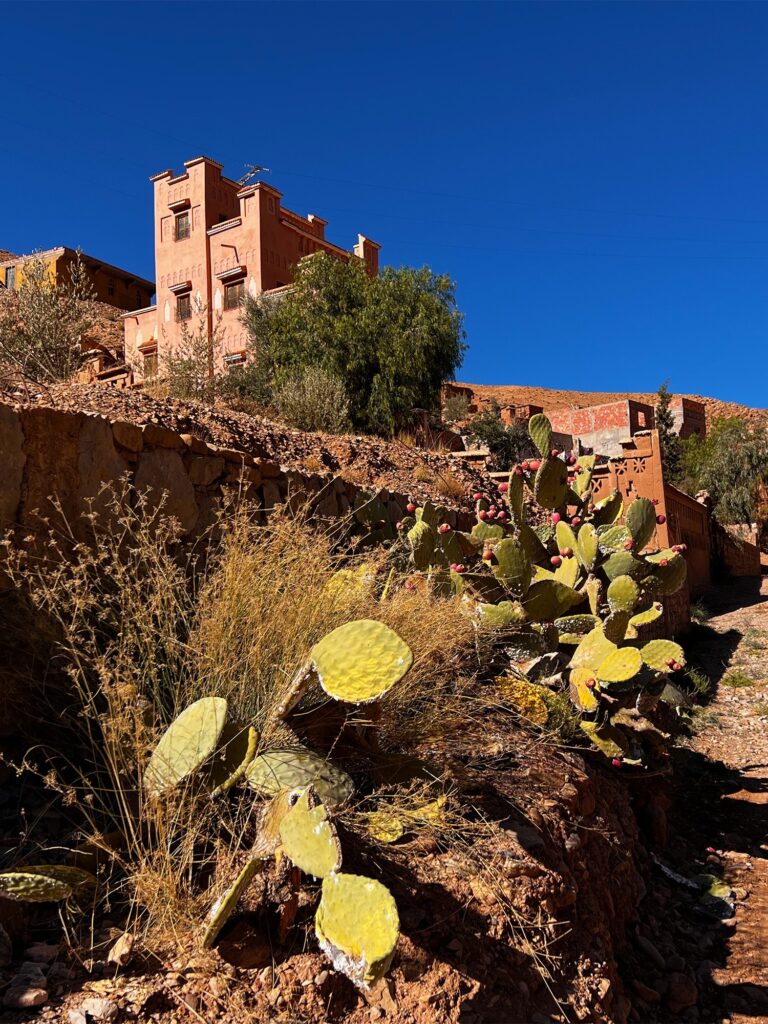
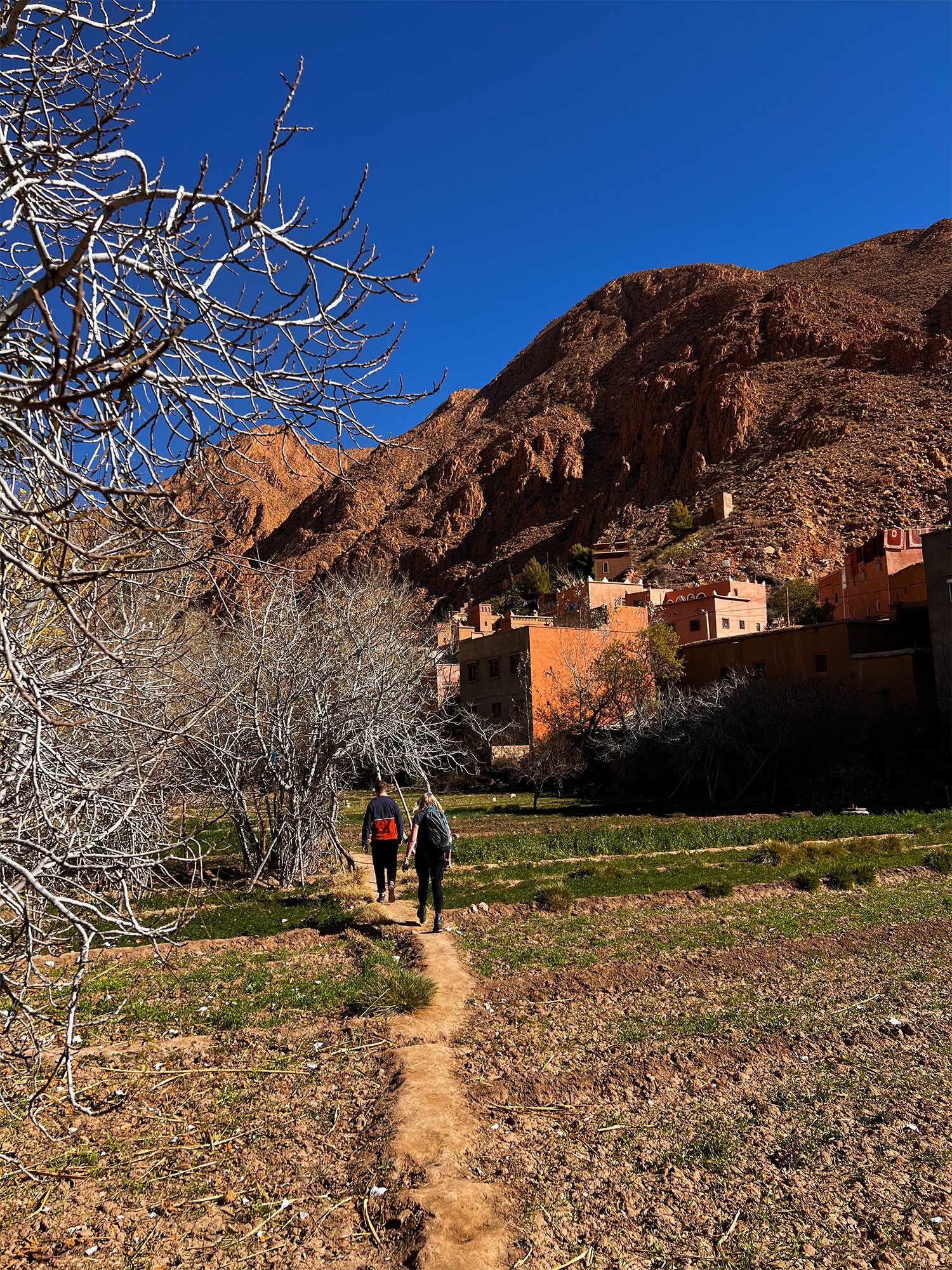

The village houses blend effortlessly with the hillside, a seamless integration with the environment, made possible by the use of the same earth and rock in their construction.
The irrigation channels, often simple earth ditches sealed with rocks and soil, play a crucial role in sustaining the land. The small gaps in the plugs can be opened to flood a plot, ensuring that the narrow, terraced fields are evenly saturated. The carefully designed landscape features low earth walls to guide the flow of water.

The scale of agriculture here is deeply labor-intensive, with managing the irrigation system requiring constant daily attention. We observe a local tending to a small plot of herbs and vegetables, realizing that everything is done by hand—true subsistence farming on a small scale.
The soundscape of the valley is wonderfully soothing: the gentle burbling of the stream, the chatter of rock doves, and the rhythmic scrape of an ancient hoe in the soil. Amidst this tranquility, the peaceful silence is gently interrupted five times a day by the call to prayer (adhān).
The Dadès Valley offers a perfect setting for walking and trekking in Morocco, featuring striking rock formations, verdant fields, melodic bird songs, countless kasbahs, and authentic Berber villages.
Rugged Landscapes and Ancient Villages: A Journey to Tamlalt
One of our favorite walks began at our house in Ait Oudinar, following the eastern side of the valley toward Tamlalt, passing numerous weathered kasbahs and ksour (fortified villages) along the way. The scenery is nothing short of spectacular, with the stark contrast between the arid mountains and the lush valley floor being particularly striking. We came across caves carved into the hillside, unique rock formations, and the remains of buildings where traditional construction methods can still be observed. The ruins of the kasbahs are accessible for exploration, though many rooms are now used as animal pens or have collapsed, so caution is advised if you wish to venture deeper.
Along the path, we encountered young girls herding sheep and goats up the hillside in search of better grazing, though the drought had made the pickings slim for the animals.
As we descended further into the valley, the rock formations became even more dramatic, signaling our approach to Les Doigts de Singes (Monkey’s Fingers), also known as the “Cliffs of Tamlalt.” The trail led us through the small village of Ait Arbi, before descending to the entrance of the Canyon des Doigts du Singe, directly across from Tamlalt.
Rugged Landscapes and Ancient Villages: A Journey to Tamlalt
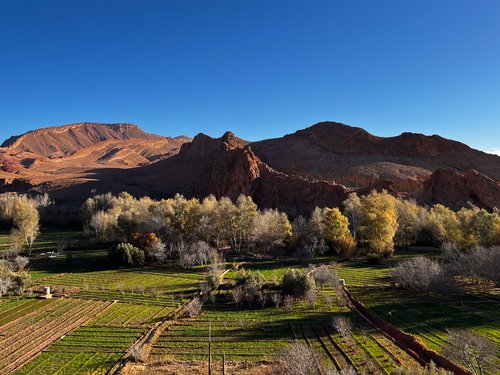
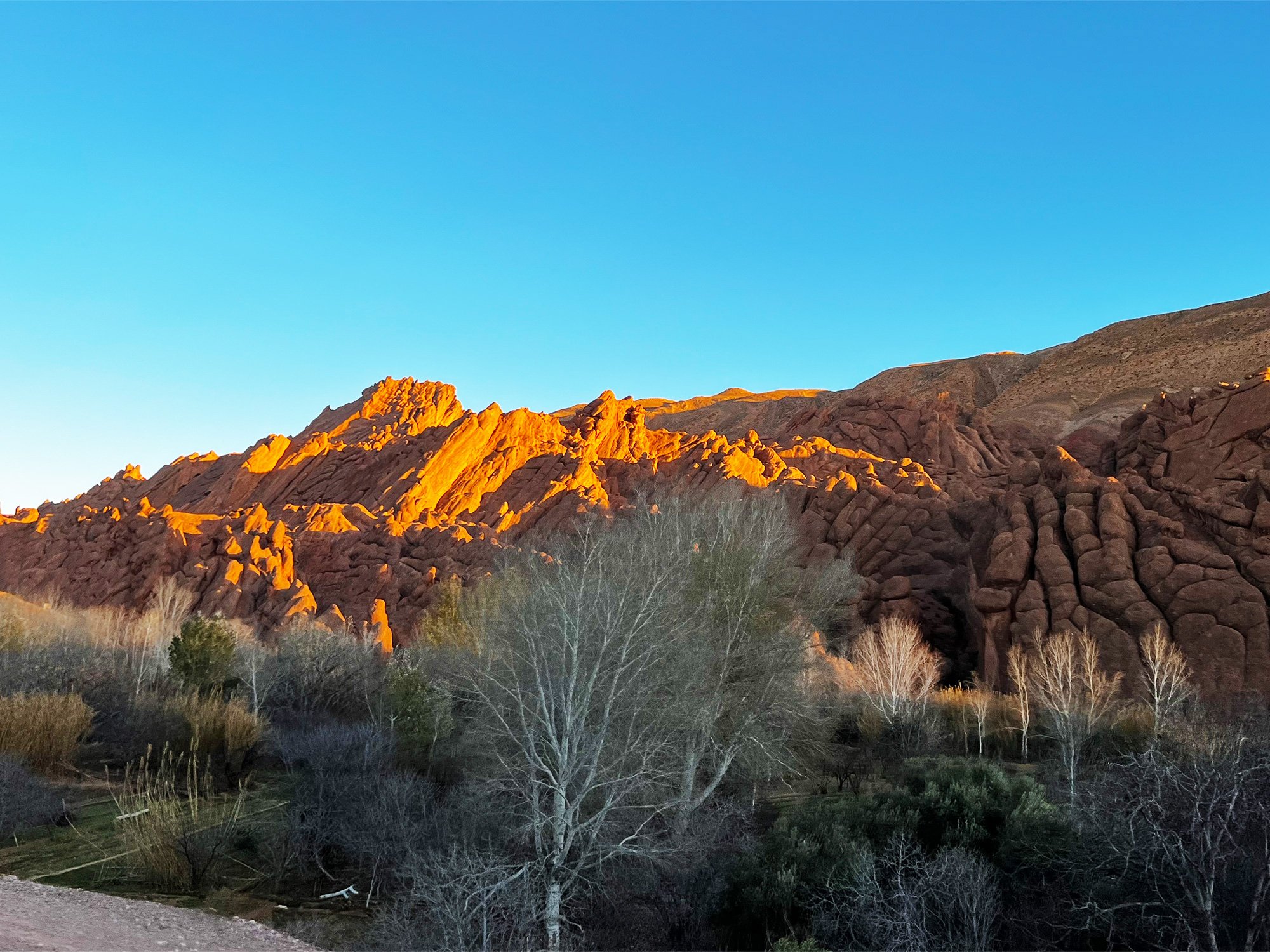
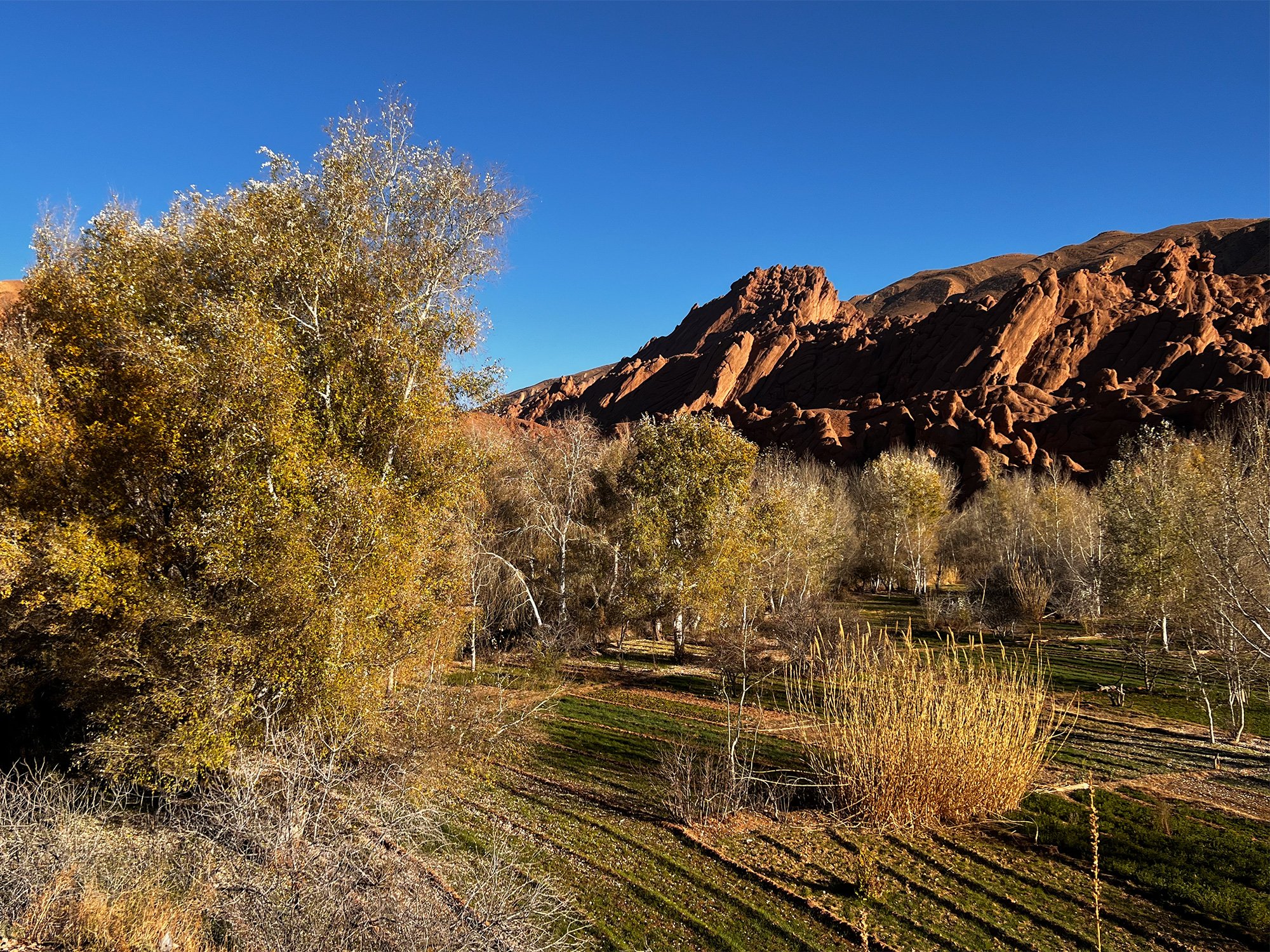
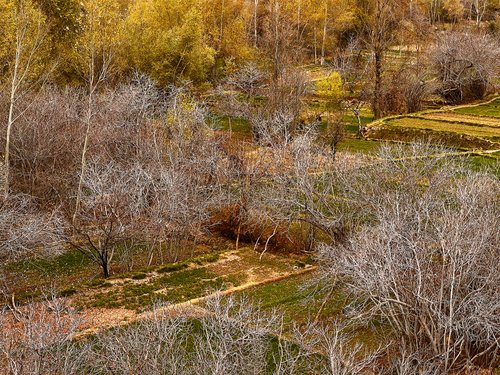

The Monkey’s Fingers rock formation is one of the most captivating landmarks in the Dadès Valley, often photographed from the village of Tamlalt across the valley. Its distinct pebbled appearance—formed by conglomerated boulders resembling fingers—makes it a geological marvel, unlike any other feature in the gorge. As its name suggests, the formation resembles a giant hand reaching up from the valley floor.
The Monkey’s Fingers are easily accessible from Tamlalt, by crossing the valley floor, or via a scenic trail along the eastern side of the valley starting from Ait Oudinar.
Hiking through the slot canyon is an adventure like no other. The canyon snakes deep into the hillside, narrowing to as little as 50 cm in some areas. The hike involves climbing over boulders, squeezing through tight passages, and occasionally navigating around pools of water, especially in the wetter months. It’s an exhilarating experience, combining the excitement of caving with the beauty of open-air exploration.
Stretching for about 1 km, the canyon takes roughly 45–60 minutes to traverse, with dramatic rock walls towering above. For the return, hikers can take the hillside track to the left of the canyon, offering more stunning views of the surrounding rock formations. For those who wish to extend the adventure, retracing your steps through the canyon is equally rewarding.
Though often described as an “easy walk,” the trail poses challenges that may surprise casual walkers. Experienced hikers will find it manageable, but weekend ramblers might struggle with the scrambling sections and narrow passages. Some visitors have turned back halfway, finding the terrain more demanding than expected. To make the most of this hike, consider hiring a local guide who can enhance the experience and ensure your safety.
A summary of hiking in the Dadès Valley
The Dadès Valley is a premier destination for walking and hiking in Morocco, showcasing breathtaking landscapes and endless opportunities for photography. Its vibrant colors, dramatic rock formations, and peaceful natural settings make it a haven for outdoor enthusiasts.
The valley is home to numerous Berber villages, where the locals’ warm hospitality ensures every visitor finds a place to eat, rest, or explore. Whether you’re seeking enriching cultural encounters or the tranquility of an isolated trail, the Dadès Valley has something for everyone.
Trail Advice
Hiking along the valley floor is relatively straightforward, but venturing into the hills and plateaus requires caution. Detailed maps are scarce, and trails can quickly fade or disappear. While GPS apps like maps.me can provide some guidance, they are not always accurate or dependable.
To fully experience the beauty and challenges of the region, hiring Mystère Desert is highly recommended. Their experienced team guarantees a safe and unforgettable adventure while sharing deep insights into the area’s history, geology, and culture.


